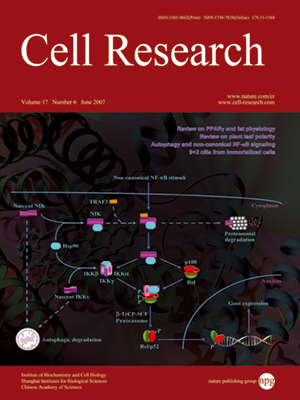
Volume 17, No 6, Jun 2007
ISSN: 1001-0602
EISSN: 1748-7838 2018
impact factor 17.848*
(Clarivate Analytics, 2019)
Volume 17 Issue 6, June 2007: 537-545
ORIGINAL ARTICLES
Cilia containing 9 + 2 structures grown from immortalized cells
Ming Zhang1,2 and Jose G Assouline3
1Department of Speech Language and Hearing Sciences, Texas Tech University ?Health Sciences Center, Lubbock, TX 79430, USA
2Department of Surgery ?Otolaryngology, Texas Tech University ?Health Sciences Center, Lubbock, TX 79430, USA
3Department of Biomedical Engineering, University of Iowa, IA 52242, USA
Correspondence: Ming Zhang(Ming.zhang@ttuhsc.edu)
Cilia depend on their highly differentiated structure, a 9 + 2 arrangement, to remove particles from the lung and to transport reproductive cells. Immortalized cells could potentially be of great use in cilia research. Immortalization of cells with cilia structure containing the 9 + 2 arrangement might be able to generate cell lines with such cilia structure. However, whether immortalized cells can retain such a highly differentiated structure remains unclear. Here we demonstrate that (1) using E1a gene transfection, tracheal cells are immortalized; (2) interestingly, in a gel culture the immortalized cells form spherical aggregations within which a lumen is developed; and (3) surprisingly, inside the aggregation, cilia containing a 9 + 2 arrangement grow from the cell's apical pole and protrude into the lumen. These results may influence future research in many areas such as understanding the mechanisms of cilia differentiation, cilia generation in other existing cell lines, cilia disorders, generation of other highly differentiated structures besides cilia using the gel culture, immortalization of other ciliated cells with the E1a gene, development of cilia motile function, and establishment of a research model to provide uniform ciliated cells.
Cell Research (2007) 17:537-545. doi: 10.1038/sj.cr.7310151; published online 17 April 2007
FULL TEXT | PDF
Browse 1813


